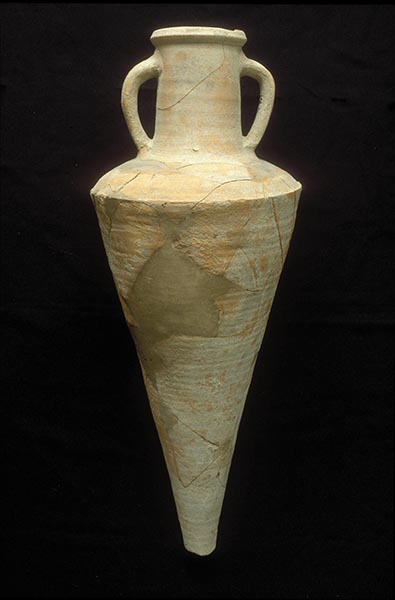Strata: Then and Now: Containers of the Ancient World

An amphora (plural, amphorae) is one of the main kinds of pottery vessels used in Greco-Roman times. Amphorae come in different shapes and sizes—depending on their place, date and purpose. These jars generally have an elongated body, a narrow neck and two vertical handles on opposite sides.
Amphorae served as storage and transport vessels for a wide range of commodities—liquid and dry alike—including oil, wine, milk, grain, olives and fish products. In ancient Greece, extra-large amphorae were also used for funerals and as grave markers.

Making a ceramic amphora required three major steps: preparing the clay, forming the vessel and firing the completed amphora in a kiln. After firing, the amphora may have received outer decoration or an interior treatment with resin to prevent the permeation of stored liquids. Stoppers and seals were supposed to prevent the contents from spilling and spoiling.
To indicate their place of origin, destination, date, contents or volume, amphorae were often marked with stamps (in their soft clay, before firing) and inscriptions (with pen and ink, after firing).
Already a library member? Log in here.
Institution user? Log in with your IP address.

